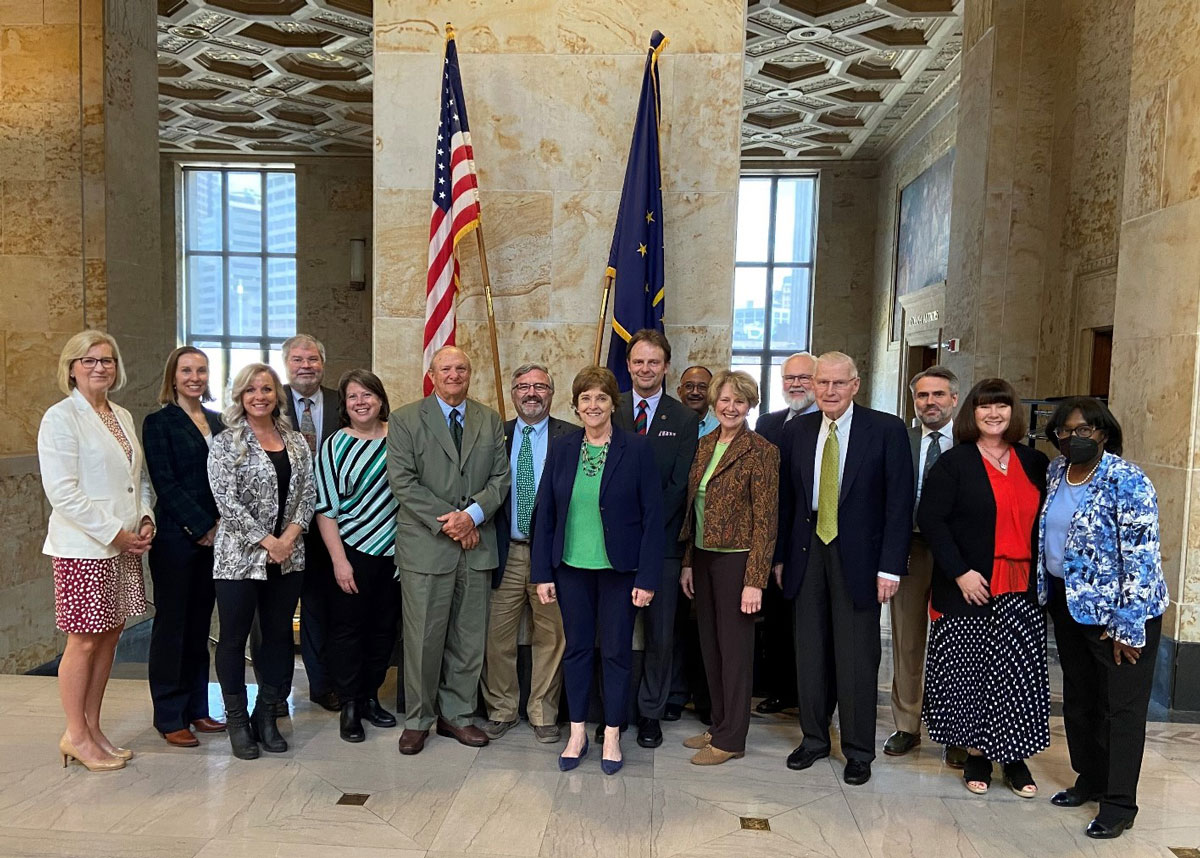A new framework created by Indiana state health leaders and researchers at the Indiana University Fairbanks School of Public Health in Indianapolis could help other states improve their public health systems and increase funding.
In 2023, the Indiana General Assembly approved an unprecedented 1,500 percent increase in public health funding, approving $225 million over the 2024 and 2025 fiscal years. With a four-to-one investment in public health interventions, the state will spend less on treating people who are sick and focus more on preventing illness.
In a new article in Health Affairs, “Indiana’s Public Health Investment Holds Insights for Other States,” researchers at the Fairbanks School of Public Health and leaders at the Indiana Department of Health and the Marion County Public Health Department describe how they created a framework for increasing public health funding that could be replicable in other states.
Reviewing the state of public health
In December 2020, researchers at the Fairbanks School examined the condition of Indiana’s public health system in the report “Indiana Public Health System Review.”
“The COVID-19 pandemic sounded the alarm highlighting the shortcomings of our current public health system,” said Nir Menachemi, dean of the Fairbanks School and lead author of the article in Health Affairs. “This was the first systemwide report of its kind in Indiana, and it was designed to bolster the work of our dedicated local and state health workers. It covered not only the underfunding of Indiana’s public health system, but, based on a wide range of evidence, it also suggested best practices for state and local health departments and steps for implementation.”
The report concluded with the recommendation to create a statewide task force with broad representation from stakeholders to formulate solutions to the report’s findings. The report also provided a foundation to gather legislative support and transform the state’s public health system.
Moving the needle on public health
On Aug. 18, 2021, Indiana Gov. Eric Holcomb issued an executive order establishing the Governor’s Public Health Commission. The commission’s membership included locally elected officials and leaders from business, health and academia, including leaders from the Fairbanks School.
Key efforts that resulted in the commission’s success included:
- Monthly public meetings.
- Seven statewide listening tours.
- The Governor’s Public Health Commission report, which included structural and operational actions to expand the availability of public health services across the state.
The researchers also noted that consistent and coordinated communication was key to the commission’s success. The Indiana Department of Health held regular meetings with legislators, trade associations and local public health leaders to answer questions and resolve issues as they were raised.
A framework for other states
The researchers detailed the lessons they learned to strengthen investments in public health that could be replicated in other states.
“An important lesson that we learned was the deliberate uncoupling of the benefits of public health from partisan narratives,” Menachemi said. “We also demonstrated a clear link between the health of the population and the future economic vitality of the state, which helped to align stakeholders.”
Other outcomes of the commission include:
- The inclusive composition of the Governor’s Public Health Commission, especially the strategic selection of the co-chairs — one with extensive experience with the political process, the other with extensive public health expertise.
- The transparent and accessible nature of commission operations, with open meetings, a statewide listening tour and all materials made available publicly ahead of or soon after each meeting.
- The locally authored university report that assessed the Indiana public health system. The knowledge gaps among stakeholders identified by the report influenced what the commission focused on, and how.
- The voluntary opt-in approach to funding at the county level, with shared match requirements.
The funding, called Health First Indiana, required counties to contribute a 20 percent match, but they maintain independent control over how to provide the required public health services. Counties can scale existing programs within their communities, create new grant-funded programs or expand services in partnerships with neighboring counties.
“Indiana’s experience showed how academic institutions, state and local government officials, business and community leaders, hospital leaders, health leaders, and other stakeholders can work together in pursuit of shared goals,” Menachemi said. “The health of the population and the economic vitality of the community are universal goals that should be shared by leaders in every state.”
Authors on this report include Menachemi; Dr. Lindsay Weaver, commissioner of the Indiana Department of Health; Dr. Virginia A. Caine, director and chief medical officer of the Marion County Public Health Department; D. Shane Hatchett, Indiana Department of Health; Dr. Kristina Box, Indiana Department of Health; and Paul Halverson, Fairbanks School.
The “Indiana Public Health System Review” and the Governor’s Public Health Commission were funded by grants from the Richard M. Fairbanks Foundation.


